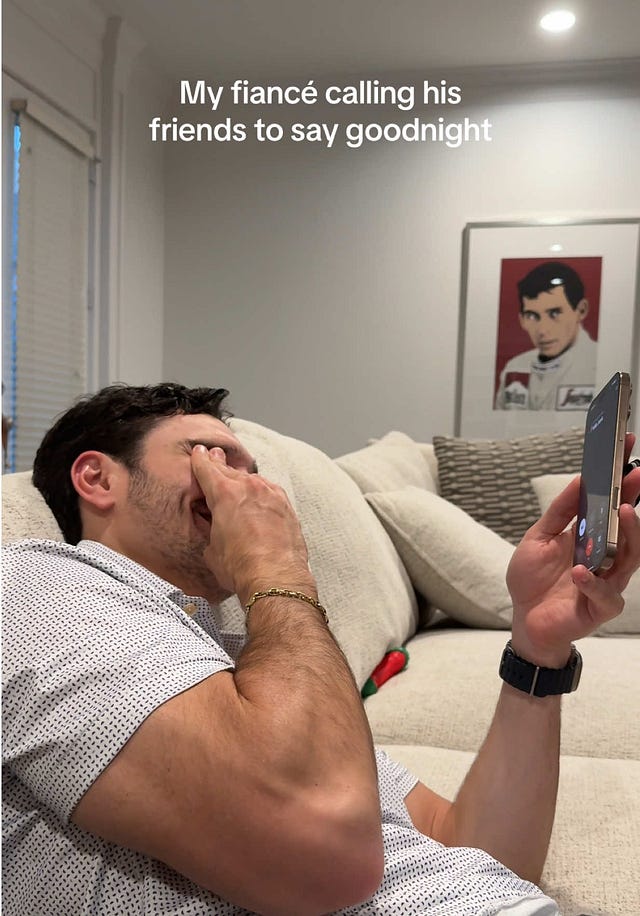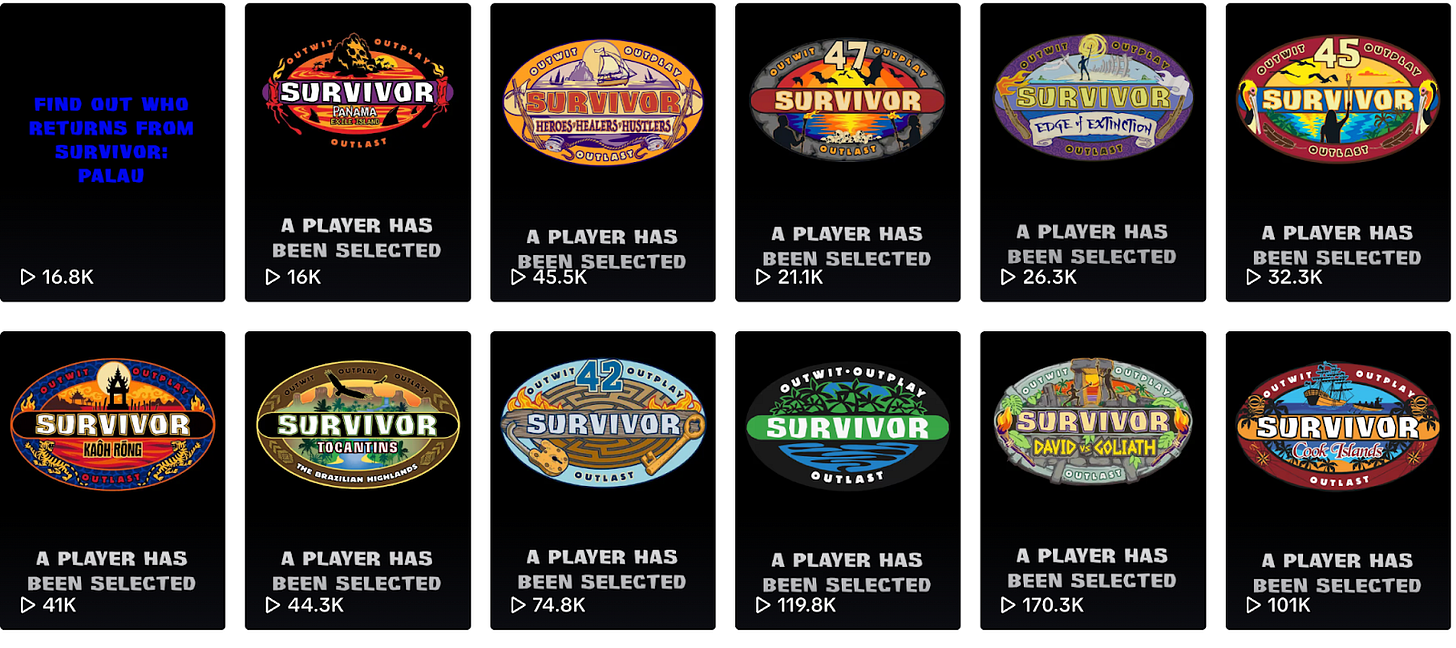June 2025 Trend Report
Just calling to say, “Touch Grass”
Welcome to neuewave!
June has already been off to a great start, but is certainly not without its woes on social media. While the world watches an embarrassing manchild fight go down on Twitter/X, or listens to Manchild by Sabrina Carpenter, we have been deep in conversations surrounding online trends, and the future impact AI will have on the creative industry. If you missed our recent perspective piece, The Hollow Canyon, we make the case for human creativity among the rise of generative AI. We highly recommend checking that out, and would love to hear your thoughts.
neuemotion is headed to Cannes Lions!
We're thrilled to see a team representing neuemotion headed to France next week for the Cannes Lions International Festival of Creativity! From our work with LinkedIn, to hearing Robin Simon Wood on the Future Gazers panel, we are so proud to be a part of the festival. Plus, we'll be sharing thoughts from the festival right here later this month. If you're attending, come find us! If not, stay tuned.
Let’s talk trends.
🎸 You can be Vulnerable, as Long as it’s Funny
Marketers and brand strategists often preach that authenticity is the bedrock of building a thriving online audience. Whether you're a burgeoning brand or an aspiring influencer, the mantra is clear: be yourself. But what happens when "being yourself" veers into oversharing? Is there such a thing as being too vulnerable online? Recent weeks on social media suggest a resounding "yes"—unless you’re in on the joke.
For years, storytelling, putting yourself out there, and embracing vulnerability have been tactics that foster genuine connections. Audiences are then “supposed to” feel like they have an intimate, personal relationship with the person or brand behind the screen. Yet, when vulnerability crosses into extreme territory, the reaction can flip dramatically. Instead of drawing people in, it repels. Even giving the public implicit permission to ridicule those who lay bare their lives without apology.
Regardless of your personal interest in Justin Bieber, it was difficult to escape the online uproar ignited by his post following his wife Hailey Bieber's first Vogue Magazine cover. His candid (and since removed) caption, detailing a past marital disagreement where he told Hailey she would never achieve such a milestone (but was happily proven wrong), sparked an impassioned online debate, many ridiculing him for airing intimate marital details, while others were angry that he seemingly overshadowed his wife's significant achievement.
Regardless of your stance on the caption, it was an act of profound vulnerability. While vulnerability is typically lauded in the digital sphere, something about Justin's post crossed a line, granting permission from the world to make fun, rather than celebrate.
This wasn't just because of his celebrity status, either. We saw a similar phenomenon with the viral "guitar guy" from this month, whose display of vulnerability and joy was met with a slew of parody videos and hate online.
At its core, nothing he did was unique—people share their original music online all the time, and it certainly wasn't the worst musical content ever posted. So why was this particular act of vulnerability so worthy of public ridicule?
The critical distinction often lies in tone and delivery, and crucially, a willingness to not take oneself too seriously. Consider the popular "you're so funny" trend from earlier this year, where users share deeply personal (even traumatic) confessions. This type of content is widely accepted—even celebrated—online because the vulnerability is packaged with humor, often accompanied by upbeat music and a self-deprecating style. This lighthearted approach makes the oversharing palatable, allowing audiences to embrace the raw honesty without judgment, while guitar guy’s passion and unapologetic tenacity led people to feel like they had permission to not take it seriously.
Ultimately, while authenticity remains a powerful tool, the digital landscape demands a discerning approach to vulnerability. It’s not just about what you share, but how you share it.
How this shows up on social:
The recent "just calling to say goodnight" trend on social media, involving men unexpectedly calling their male friends to wish them goodnight, is a perfect example of “acceptable” vulnerability. Breaking free of the typically stoic nature often associated with male friendships. The trend offered a subtle yet significant display of vulnerability, encouraging men to express a soft, caring sentiment to their peers. By framing this unexpected tenderness within a humorous context, the trend facilitated an emotional openness that might otherwise feel uncomfortable, proving that it's often okay to be vulnerable online if that vulnerability is delivered comedically – or even better, unseriously.
😶🌫️ Big Reveals
This month, we've witnessed a fascinating evolution in how major franchises are building excitement for their upcoming projects. It's a strategic shift in how information is revealed, igniting social media and cultivating anticipation among fans. We're talking about a distinct new format for cast list announcements. Traditionally, these were dropped all at once, a simple list or Deadline article to be consumed. But now, we're seeing something different.
Instead, major players are leveraging social media for multi-day reveal video series, dedicating individual spotlights to each cast member. This isn't just about sharing names; it's about transforming a basic piece of information into an event. This approach profoundly reimagines the use of social media for making significant announcements. It's rapidly setting a new standard, offering a clear blueprint for how even the most minor details can be elevated and made newsworthy in the digital age.
How this shows up on social:
We have seen two major franchises from completely different media spheres employ this reveal tactic: The Hunger Games franchise, and the long-standing reality competition show, Survivor.
For the Hunger Games’ new movie installation for Sunrise on the Reaping, the studio released 14 videos over a month to announce each major cast member, creating tons of buzz and sparking conversations for every cast member. It proved to be a highly successful tactic, maintaining conversation focused on the film for weeks.
Similarly, Survivor adopted this tactic to build excitement for its highly anticipated 50th season, which traditionally features fan favorites from previous seasons. To unveil who would be returning, Survivor launched a reveal video series on TikTok. These teasers hinted at the selected players by revealing only the season they originally appeared on, prompting fans to speculate and theorize about who would be playing again. Once all 15 individual cast member videos were live, they released a final video featuring host Jeff Probst revealing the full cast list. This strategic rollout across varying entertainment properties underscores the versatility of this new announcement format, proving to be a powerful tool for generating sustained buzz and engagement.
💦 Sweating Mid-Life
The concept of status has undergone a significant recalibration, a phenomenon we explored in a previous neuewave, where we discussed how economic uncertainty has led to the prevalence of status symbols acquired through knowledge and effort over traditional status symbols acquired through wealth. Since our piece, not only has the explosion of Labubu dolls further substantiated our point, but we have also seen this shift, driven by economic realities that have made traditional markers of success increasingly elusive, reimagining a different life milestone: the midlife crisis.
For 81% of millennials, the classic image of roaring away in a newly purchased sports car, or having a lavish ‘Eat, Pray, Love’ adventure is unaffordable in today's climate. Instead, their pursuit of self-reaffirmation and discovery has taken a more accessible, experience-driven turn, fueling the noticeable rise in extreme fitness pursuits like Hyrox races, and a new fascination with remote backpacking transformations gaining immense traction online, showing how economic and societal shifts have led to people redefining what it means to reinvent yourself in adulthood.
How this Shows Up on Social
Google searches for "Hyrox" alone have surged by over 150% since the beginning of the new year, and over 22 Million videos on TikTok surrounding Hyrox Race preparation, reflecting a collective pivot towards physical challenges that offer a sense of achievement and personal transformation without the price tag of a luxury vehicle.
Additionally, there has been an emerging trend of "before and after" content from scrappy, untethered backpacking trips, where viewers often note how much more vibrant, full of life, and rejuvenated those who escape the stressors of the real world then return. This showcases not a material acquisition, but a journey of rejuvenation—a more attainable form of midlife catharsis for the modern millennial.
 Tiktok failed to load.
Tiktok failed to load.Enable 3rd party cookies or use another browser
🌿 Touching Grass
“Touch Grass”— what was once an easy burn to the chronically online is now the activity for Summer 2025. A long-growing desire that seems to be hitting an all-time high, where people are craving a break from their screens.
Gen Z has walked a fine line between being highly engaged in the online world and yearning for a previously offline era, marked by their affinity for “dumbphones” (BlackBerry revival 2025, anyone?), film and digital cameras, and real-life experiences. Over the past few months, a growing discourse has emerged about the desirability of genuinely unplugging. One popular social format taking over Substack illustrates the desire to never open Instagram or watch TikTok ever again (we will let the irony of conversation on these platforms being used to say how much they don’t want to be on said platforms speak for itself).
This shift toward stepping away from technology leads to an embrace of nature, with people turning to more outdoor-oriented hobbies, and outdoor-themed activities that have influenced social content. In Pinterest’s recent Summer Trends report, "digital detox" is the search of the summer, and being offline and touching grass is the new aspiration.
The "Martha Stewart aesthetic" – think gardening, baking, and making your home cozy – has exploded on Pinterest, growing an incredible 2,889% according to their Summer Trend Report. And it makes sense. Martha Stewart was the blueprint in the late 90s and early 00s for a more natural, yet elevated lifestyle that people are gravitating towards today. Her appeal now, in this hyper-digital age, lies in that nostalgia for an analog hands-on existence.
How this Shows Up on Social
This desire to unplug is showing up in how we spend our time and what we find fun. This spring and summer have seen a vibrant surge in the popularity of cookbook clubs and garden party themed content across social media platforms. Fueled by a collective desire for connection, creative expression, and a deliberate break from screens, individuals are finding community through home-cooking and outdoor gatherings. From elaborate tablescapes to beautifully plated dishes from a chosen cookbook to whimsical garden decor, in a digital detox summer, these themes have become an approachable way to integrate personal interests and a desire to unplug, resonating deeply with online communities seeking inspiration for their own real-life get-togethers. It's clear people want to get their hands dirty, get outside, and feel connected to what they're doing.
This is what we are seeing going into summer: a cultural reshaping of how we present our most personal moments—whether that’s vulnerability, excitement, or self-reinvention, by packaging it in a way that feels more curated and experiential.
Social media is no longer just a platform for broadcasting our lives; it’s becoming a curated space to play tug of war, where people are met with the challenge of how to be vulnerable yet funny, or keep up with trends while yearning for the past. All the while, there's a growing push to find balance, embracing moments of disconnection and returning to simpler, more grounded experiences. Ultimately, these June trends reveal a fascinating tension: the desire to meticulously craft our online personas while simultaneously craving the authentic, unplugged freedom of a life lived offline.









